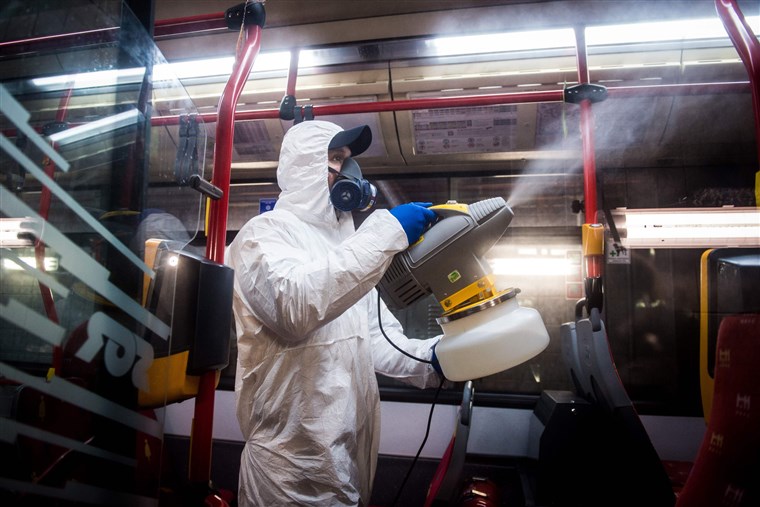Jubilee Desk
#Worldwide subsidies prop up coal power but 46% of plants will be unprofitable in 2020
China and other nations could be burdened with uneconomic and climate unfriendly coal power for decades if they build new capacity to stimulate their economies in the wake of the COVID-19 pandemic, a move China appears to be already considering, Carbon Tracker warns in a new report today.
The financial think tank finds that 46% of global coal plants will be running at a loss in 2020, rising to 52% by 2030. However, renewables and gas are already outcompeting coal worldwide and if governments deregulate power markets to allow greater competition the percentage of unprofitable coal plants will be far higher.
Political Decisions, Economic Realities warns that China, which produces and consumes about half the world’s coal, may be planning to build more coal plants to stimulate its economy in the wake of COVID-19, noting that its National Energy Administration recently announced it was ready to relax rules on coal power investment.

Globally governments are propping up expensive coal plants: 90% of coal capacity which is operating, in construction or planned is in countries with regulated or semi-regulated markets where coal power generators are implicitly or explicitly subsidised. By contrast, in deregulated markets most coal power is already unprofitable on an underlying basis – 90% in Germany and 82% in the UK in 2019.
Matt Gray, Carbon Tracker co-head of power and utilities and co-author, said: “China and other governments may be tempted to invest in coal power to help their economies recover after the COVID-19 pandemic, but this risks locking in high-cost coal power that will undermine global climate targets.
“Building new coal and propping up the existing fleet with stimulus money would be throwing good money after bad. Faced with the need to invest billions in their economies and create new jobs, governments should be planning for a green recovery by incentivising the closure of coal and spending on a major expansion of low-cost, clean renewable power.”

Carbon Tracker revealed last month that it is already cheaper to generate electricity from new renewables than new coal plants in all major markets. By 2030 at the latest it will be cheaper to build new wind or solar capacity than continue operating coal worldwide.[1]
Global coal use in electricity generation must fall by 80% below 2010 levels by 2030 to limit global warming to 1.5°C, according to analysis of recent research from the UN’s Intergovernmental Panel on Climate Change.[2] Decarbonisation of the global energy system can grow the global economy and create up to 28 million jobs by 2050, according to IRENA, the International Renewable Energy Agency.[3]
However, Carbon Tracker’s latest report finds that government subsidies are driving plans to build nearly 500GW of new coal plants worldwide at a cost of $638 billion, and unless policies change 72% of them will still be cashflow positive on an underlying basis when they begin operation.
The report says China should reconsider plans to spend $158 billion on 206GW of new coal power because “renewable energy and battery storage are more viable and sustainable sources of economic growth”.
The virus will not change the underlying profitability of China’s coal plants but the economic downturn caused by the outbreak risks relaxing the planning process and environmental regulations associated with any future investment.
Carbon Tracker assessed the underlying cashflow of 95% of coal plants that are operating, under construction or planned worldwide: 6,696 operating units (2,045GW) and 1,046 units in the pipeline (499GW). (Economic comparisons with renewables are taken from last month’s report.[4]) It found that:

• In China, 59% of the country’s existing 982GW coal fleet is running at an underlying loss; a further 206GW is in the pipeline but 61% would enter the market with negative cashflow. Already 71% of operating coal power costs more to run than building new renewables.
• In India, a regulated market, 2% of the existing 222GW coal fleet is running at an underlying loss; a further 66GW is in the pipeline but 23% would enter the market with negative cashflow. Already 51% of operating coal power costs more to run than building new renewables.
• In the US, where two thirds of coal plants are regulated, 22% of the existing coal fleet is running at an underlying loss. No new plants are planned. Already 47% of operating coal power costs more to run than building new renewables.
• In Europe, which is mostly deregulated, 62% of the existing 146GW coal fleet is running at an underlying loss; half the 8GW of planned new coal would enter the market with negative cashflow. Already 96% of operating coal power costs more to run than building new renewables.
Carbon Tracker has warned that governments and investors building new coal may never recoup their investment because coal plants typically take 15 to 20 years to cover their costs.
“Governments and investors have a responsibility to navigate a transition away from coal in an orderly way to ensure consumers receive low-cost energy and investors plan for premature closures,” says the report.
“Policymakers urgently need to deregulate power markets to create a negative investment signal for coal project developers and ensure least-cost power generation technologies are built. Failure to do so could mean locking in 499GW of high-cost coal power for decades.”
Carbon Tracker identified key factors influencing global coal plants’ cashflow:
• They benefited from an 8% fall in coal prices from 2018 to 2019 with reduced demand in the EU, US and China. However, prices have held up since the outbreak of COVID-19 on expectations of a Chinese economic stimulus package, and Carbon Tracker expects them to increase marginally to $74/tonne as economies recover in the second half of 2020.
• Carbon prices increased 45% in 2019. As regulators strengthen carbon pricing and pollution regulation, this will continue to undermine the profitability of coal. Although EU carbon prices crashed in March from €24 to €15 per tonne, they would need to reach €9 over a sustained period to incentivise a revival in coal power.

• Power prices declined by 8% from 2018 to 2019 as a result of deregulation and falling costs of renewables. However, many coal operators in regulated markets still receive a guaranteed rate of return which shields them from these deflationary trends.
• Competition from renewables and gas means coal plants are operating for fewer hours, pushing up running costs, especially in the US, China, Europe and India. Global average capacity factors – the proportion of time plants are running – fell from 61% in 2010 to 53% in 2019.
• In China, power market reforms, which aim to end guaranteed hours of generation and fixed tariffs, are subjecting more coal generators to market forces, resulting in lower revenues for high-cost generators.

METHODOLOGY
• Carbon Tracker used publicly available information to estimate revenues from wholesale power markets and out-of-market scources such as ancillary and balancing services and capital markets. This does not include hedging.
• It assessed operating cashflows by deducting the cost of running each coal plant, taking into account fuel, maintenance and existing or ratified carbon pricing and air pollution policies. It used coal fuel price data from Bloomberg and coal capital costs from the International Energy Agency and Carbon Tracker.
• Carbon Tracker’s proprietary Global Coal Power Economics Model (GPEM) tracks 95% of coal plants that are operating, under construction or planned and is updated quarterly.
 Jubilee Post News & Views
Jubilee Post News & Views






